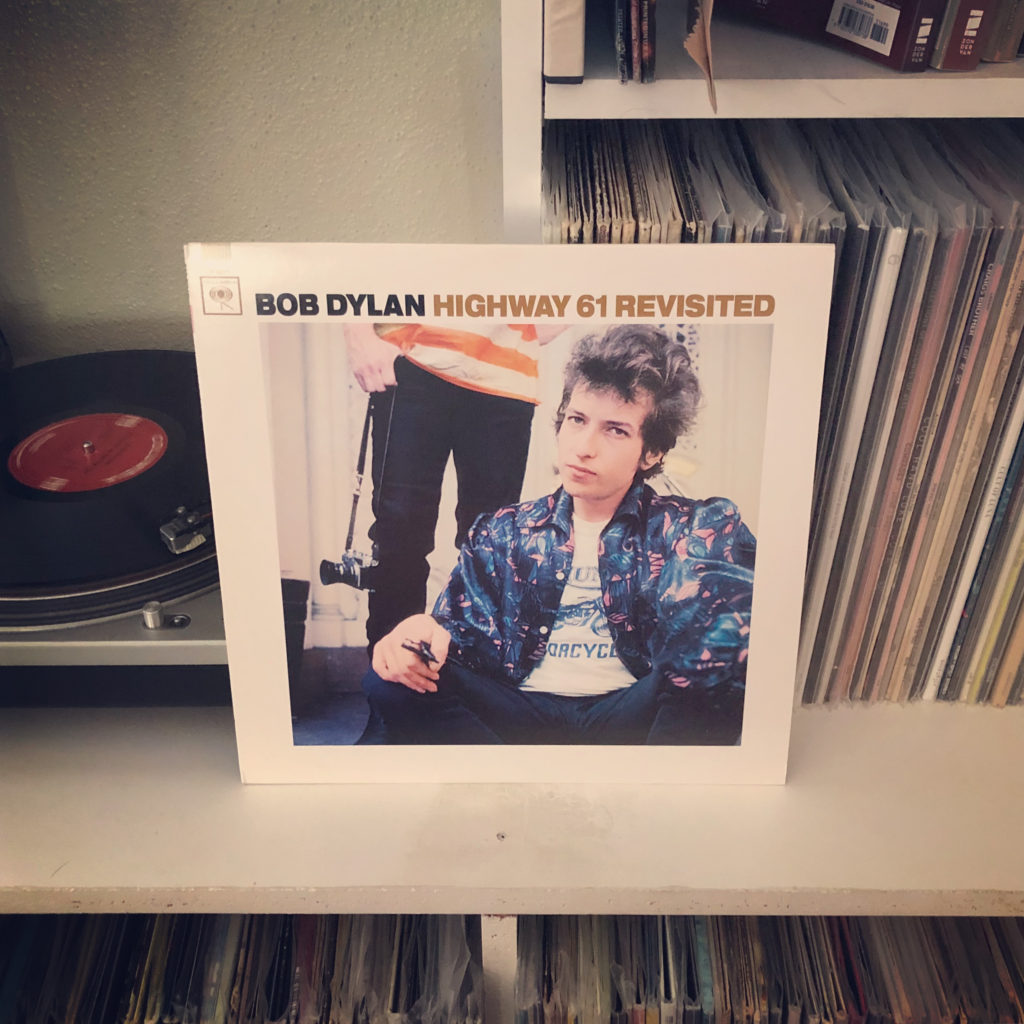A lot happened between Turn! Turn! Turn! and Fifth Dimension. The primary songwriter left, Bob Dylan betrayed folk music, and the Beatles released Rain, which some argue was the first proper psychedelic song. The Byrds must have heard that single (and famously, John Coltrane’s India) and perked up, because on their third album (which was released before Revolver), the group adapts their California folk rock to accommodate seemingly unnatural source material (Mr. Spaceman, Eight Miles High), untraditional chord changes (What’s Happening?!?!), and what would later be referred to by music critics with the term “guitar freakouts” (I See You).
folk rock
Record #58: Bob Dylan – Bob Dylan’s Greatest Hits, Vol. II (1971)
Amidst a critical and commercial slump and rumors that he had no plans to record a new LP, CBS record execs (with Dylan’s blessing) set to making money off of their golden goose, leading to this two disc collection. The result is a truly worthwhile look at a proper genius’s full career, including cuts from just about every album he had released up to that point (excepting his debut, Times, and his critically panned Self Portrait) as well as seven unreleased tunes, including the sneering rocker Watching the River Flow and the legendary Quinn the Eskimo.
Record #55: Bob Dylan – Blonde on Blonde, 1966
According to Wikipedia, Blonde on Blonde is the final album in what is largely considered to be his Rock Trilogy. When I read that, I was shocked that I hadn’t noticed it before. While Bringing It All Back Home and Highway 61 Revisited have always struck me as different sides of the same coin, Blonde on Blonde seemed a different monster altogether.
Record #54: Bob Dylan – Highway 61 Revisited (1965)
 Despite his affirmation of Highway 61’s significance as the trotting grounds of country blues legends, this album ends up being just as ironically titled as Bringing It All Back Home, on which Dylan brought just about nothing “Home,” but fled from his roots in a fury of rock bands and surrealism. In many ways, Highway 61 Revisited is Home’s Amnesiac–a further exposition on a previous album that had more to say than one groundbreaking album could say. Continue reading
Despite his affirmation of Highway 61’s significance as the trotting grounds of country blues legends, this album ends up being just as ironically titled as Bringing It All Back Home, on which Dylan brought just about nothing “Home,” but fled from his roots in a fury of rock bands and surrealism. In many ways, Highway 61 Revisited is Home’s Amnesiac–a further exposition on a previous album that had more to say than one groundbreaking album could say. Continue reading
Record #15: The Antlers – Burst Apart (2011)
 I was not one of the throngs who flocked to The Antlers and praised their critical breakthrough Hospice when it was released in 2009.
I was not one of the throngs who flocked to The Antlers and praised their critical breakthrough Hospice when it was released in 2009.
Continue reading
Record #10: America – America (1971)
Up until listening to this record (today being its first time on my platter), the only America song I knew, like you probably, was “A Horse With No Name,” a mildly convincing Neil Young impression.
Given that to go on, I was expecting an album that opens with the hit single, and then offers a bunch of attempts to rehash its success.
I was wrong.
The single doesn’t arrive until five tracks in, using the preceding four to reintroduce America to the fan who bought the record solely on the merit of their most well-known song.
And these opening four songs are strong in their own right, showcasing an America that is capable of writing folk-pop songs that bounce higher and rock harder (“Sandman” features a beaten drum set and a fuzzed out lead guitar) than the relaxed, midtempo “Horse,” and the excellent vocal harmonies that weave through all of the songs conjure more Simon & Garfunkel than Neil Young, which is a welcome comparison (compare anyone to Simon & Garfunkel and I’m there).
By the time “Horse With No Name” arrives (which was added on later editions, as it hadn’t been recorded on the album’s debut. Thank you Wikipedia) it’s more impressive than any of the other times I’ve heard it. The band sounds more confident, sure-footed and, judging on the four tracks that precede it, more self-aware of themselves than the amateurish copy-cats that the listener could have dismissed the group as after hearing the single out of context.
America goes on from “Horse” to prove themselves more than competent as songwriters, composers, and instrumentalists, especially on “Here,” which starts with a slow droning chord progression, then bursts into a raucous clap along before an impressively executed acoustic guitar solo takes the front of the mix, dies down, and returns to the opening segment.
Side two opens with “I Need You” (the album’s second single), which is the only weak song on the album. “Here,” America hangs up their guitars and tries their hand at a Beatles-style piano ballad. The result is boring and disappointing, and even the writing suffers (“I need you/like the flower needs the rain.” Really, guys?) “I Need You’s” shortcomings are only augmented as the group takes the guitars back after the next song and continues on the album doing what they do best, which is making guitar songs that, while pretty, explore enough through means of song structure and tempo changes, are still interesting enough to have merited the 1972 Grammy for Best New Artist.
America, we’ll be hearing from you again.